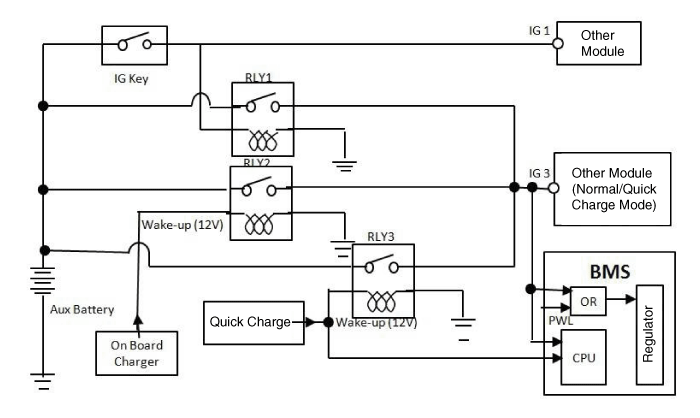Kia Soul EV: High Voltage Charging System / Description and Operation
Kia Soul EV (PS EV) 2015-2020 Service Manual / EV Battery System / High Voltage Charging System / Description and Operation
| Description |
Electric vehicle can be charged by two methods, rapid charge and normal charge.
In the case of normal charge, the battery is charged after
220V AC power is transformed to DC power by On-Board Charger (OBC). In
the case of rapid charge, the DC power from charging station goes
directly to the battery.
While charging the vehicle, the driving of the vehicle is
restricted logically for safety. And the vehicle cannot be charged by
two charge methods at the same time.
The logic is controlled by BMS ECU and IG relays #1,2,3.
IG 3 signal activates the Low Voltage DC-DC Converter (LDC),
BMS ECU, Motor Control Unit (MCU), Vehicle Control Unit (VCU) and
On-Board Charger (OBC), and it enables the vehicle to be charged.

|
 Components and Components Location
Components and Components Location
Components
1. On-Board Charger (OBC)2. Rapid Charge Port3. Normal Charge Port4. High Voltage Battery
...
 ON-Board Charger (OBC) Specifications
ON-Board Charger (OBC) Specifications
Specification
Maximum Output6.6kWOutput Density0.52kVA/?Size327 X 367 X 105 mmICCBApprox. 1.4kWEVSE6.6kW
...
Other information:
Kia Soul EV (PS EV) 2015-2020 Service Manual: Description and Operation
Description Regeneration Brake System During deceleration or braking of an electric vehicle or HEV, the drive motor acts as an alternator and charges the battery by converting the vehicle’s kinetic energy generated during braking into electrical energy. Regenerative braking amount de ...
Kia Soul EV (PS EV) 2015-2020 Service Manual: Cowl Cross Bar Assembly Components and Components Location
Component Location 1. Cowl cross bar assembly ...
Copyright © www.ksoulev.com 2020-2025


